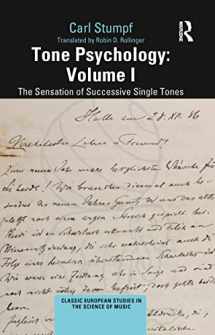
Tone Psychology: Volume I (Classic European Studies in the Science of Music)
Book details
Summary
Description
Carl Stumpf (1848-1936) was a German philosopher and psychologist and a visionary and important academic. During his lifetime, he ranked among the most prominent scientists of his time. Stumpf's intention, as evident in his book, Tone Psychology, was to investigate the phenomenon of tone sensation in order to understand the general psychic functions and processes underlying the perception of sound and music. It could be argued that modern music psychology has lost or perhaps ignored the epistemological basis that Carl Stumpf developed in his Tone Psychology. To gain a confident psychological basis, the relevance of Stumpf's deliberations on music psychology cannot be overestimated. Analyses of the essence of tones, complex tones and sounds are fundamental topics for general psychology and epistemology. By the end of this two-volume work, Stumpf had established an epistemology of hearing.
The subject of Volume I is the sensation of successive single tones. Stumpf demonstrates that analysis leads to the realisation of a plurality (is there only one tone or are there several tones?), which is then followed by a comparison: an increase may be observed (one tone is higher than the other) or a similarity may be realised (both tones have the same pitch or the same loudness). With almost mathematical stringency, Stumpf developed a topology of tones. Volume II deals with the sensation of two simultaneous tones (musical intervals). The books are stimulating, rewarding and provocative and will appeal to music psychologists, music theorists, general psychologists, philosophers, epistemologists and neuroscientists.


We would LOVE it if you could help us and other readers by reviewing the book
Book review



